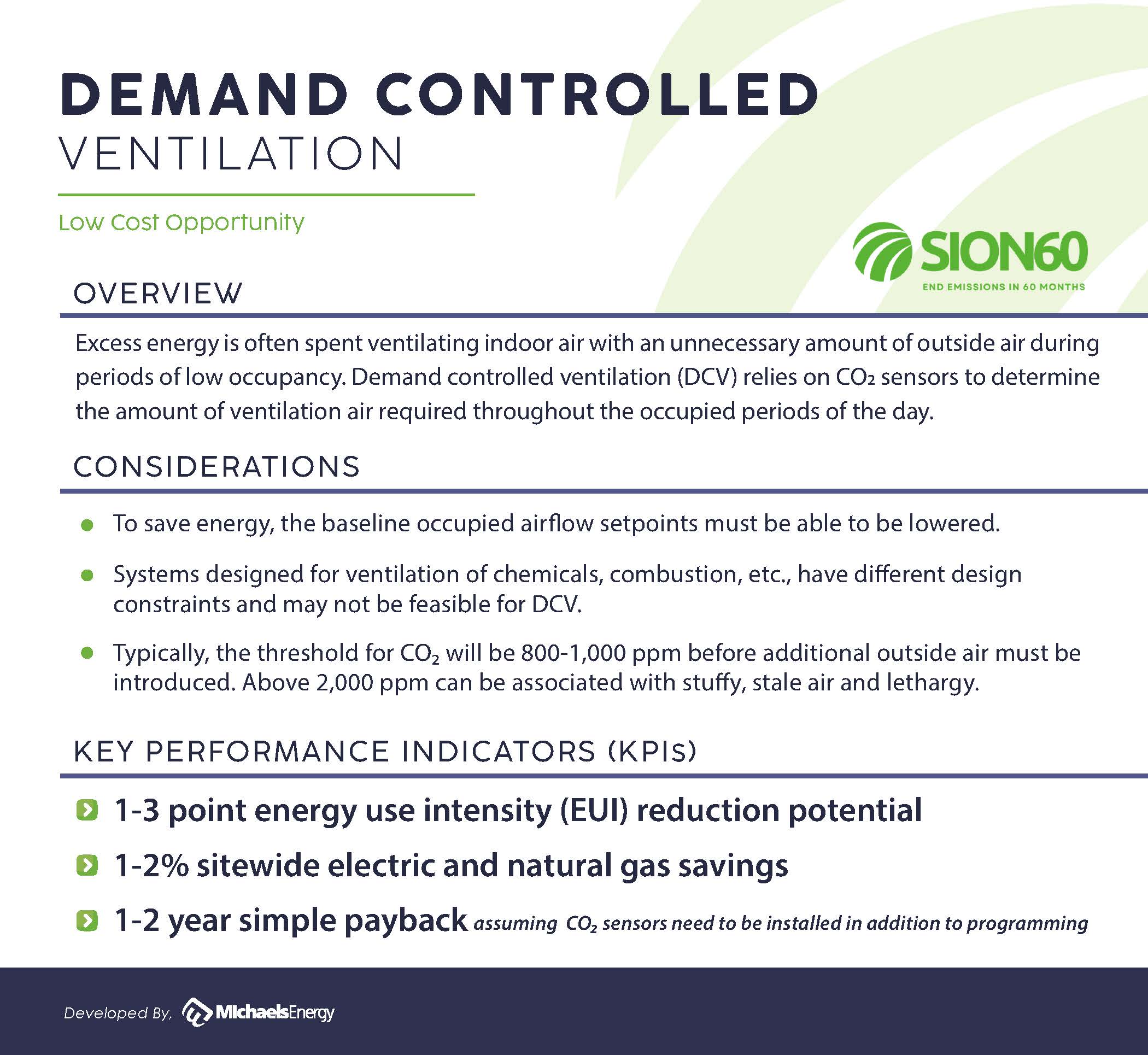Demand Controlled Ventilation
CONSIDERATIONS
- To save energy, the baseline occupied airflow setpoints must be able to be lowered.
- Systems designed for ventilation of chemicals, combustion, etc., have different design constraints and may not be feasible for DCV.
- Typically, the threshold for CO2 will be 800-1,000 ppm before additional outside air must be introduced. Above 2,000 ppm can be associated with stuffy, stale air and lethargy.
KEY PERFORMANCE INDICATORS (KPIS)
- 1-3 point energy use intensity {EUI} reduction potential
- 1-2% sitewide electric and natural gas savings
- 1-2 year simple payback (assuming CO2 sensors need to be installed in addition to programming)



